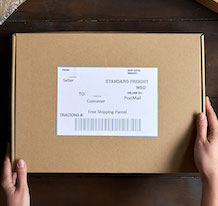All Aboard (November): Williwaws & Winter Layups

Hello sailors, boaters and sea-farers, welcome to a fresh, salty edition of All Aboard from GS Products. We stock a wide range of chain, wire rope and marine fittings, which is why we like to keep tabs on what our floating community have been getting up to online. Each month we keep up with sailing and boating blogs from across the world and web, bringing you some of the most interesting snippets.
This November, find out what a williwaw is, work out exactly how your vessel will capsize and get ready to winterise your boat.
What in the World is a Williwaw?
Have you ever been hit by a williwaw? If you’re not sure, you probably haven’t. Created in the snow and ice fields of the coastal mountains of the Fuegian Archipelago, these katabatic South American winds can reach up to 120 knots and wreak havoc with anchored vessels.
That’s why adventurous Mike and Rebecca of Zero to Cruising have been exploring the technique of shore tying to secure their vessel as they travel through the Chilean canals and around the coast of Patagonia.
- Do you have any tips to help them contend with williwaws? Have you come across any other exotically named winds on your travels? Share your ideas and stories below.
How Will Your Vessel Will Capsize?
Do you know what will happen if your vessel capsizes? All vessels are different, which means what you can expect in the event of capsizing will also vary. Yet understanding precisely what will occur if you capsize can be life-saving. If you know how your vessel will behave under these extreme circumstances, you can take decisions and measures which could safe your life.
Understanding how your vessel will behave comes down almost entirely to physics. And that’s why Safe Skipper App blogger Simon Jollands has written this recent post – to explain how the majority of vessels will behave under pressure. From the angle of your heel to the righting moment curve, read up here to get all the information you need to be prepared for virtually anything.
Winter Layup Tips
With autumn well and truly under way and winter a few weeks away on the horizon, many of you will already have winterised your vessel. A die hard few of you may stillbe braving the water, but if you’re in the UK currently, you’re probably thinking about returning to dry land and tucking your vessel up for the winter months.
If you’re planning to layup your vessel for the winter, this post from the Boat Trader Waterblogged blog is a really helpful and informative resource, packed with ideas for your winter layup, from washing, waxing and covering, to setting up battery maintenance. Get the full “how to” on the Waterblogged site.
Do you have any winter lay up tips or advice on coping with williwaws? Share your expertise with other readers below.













